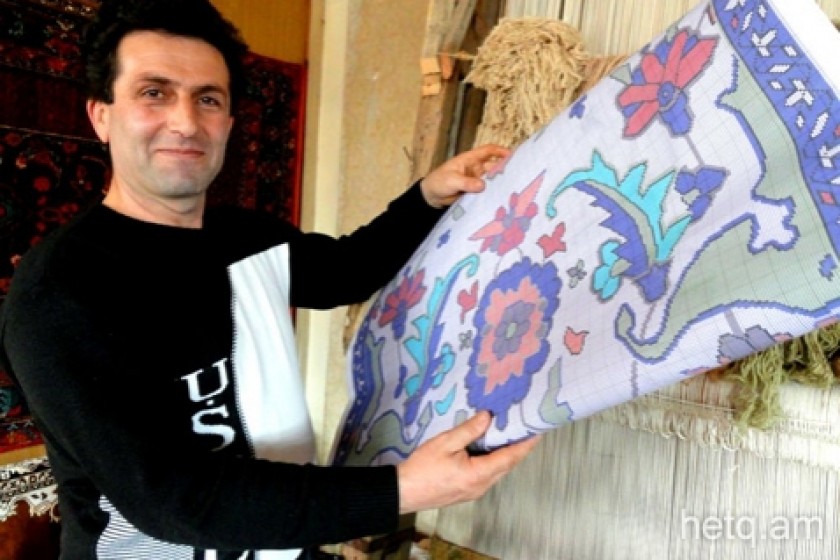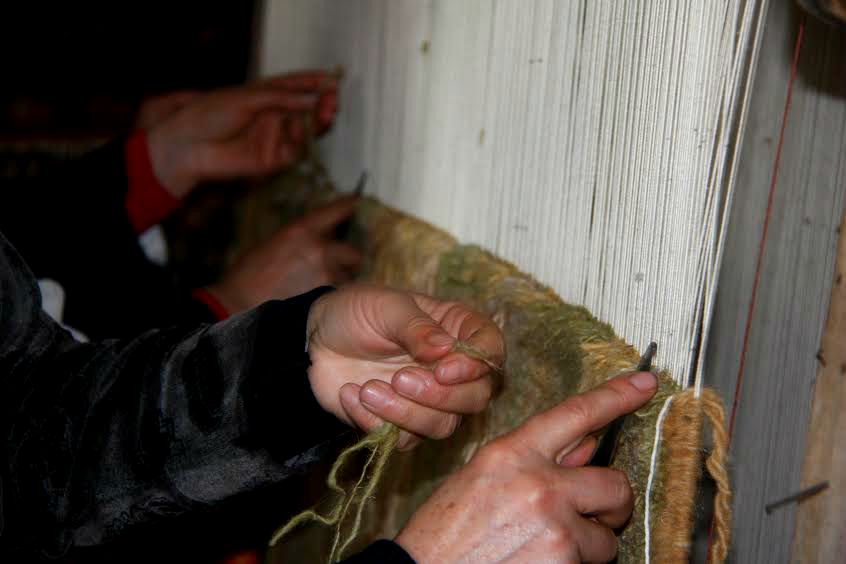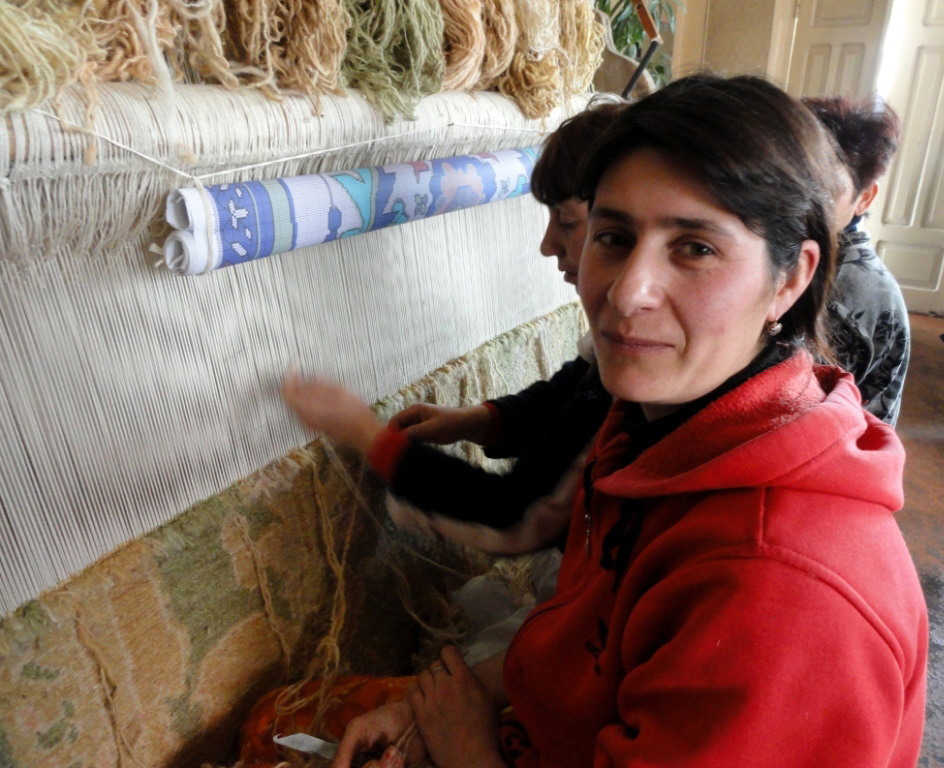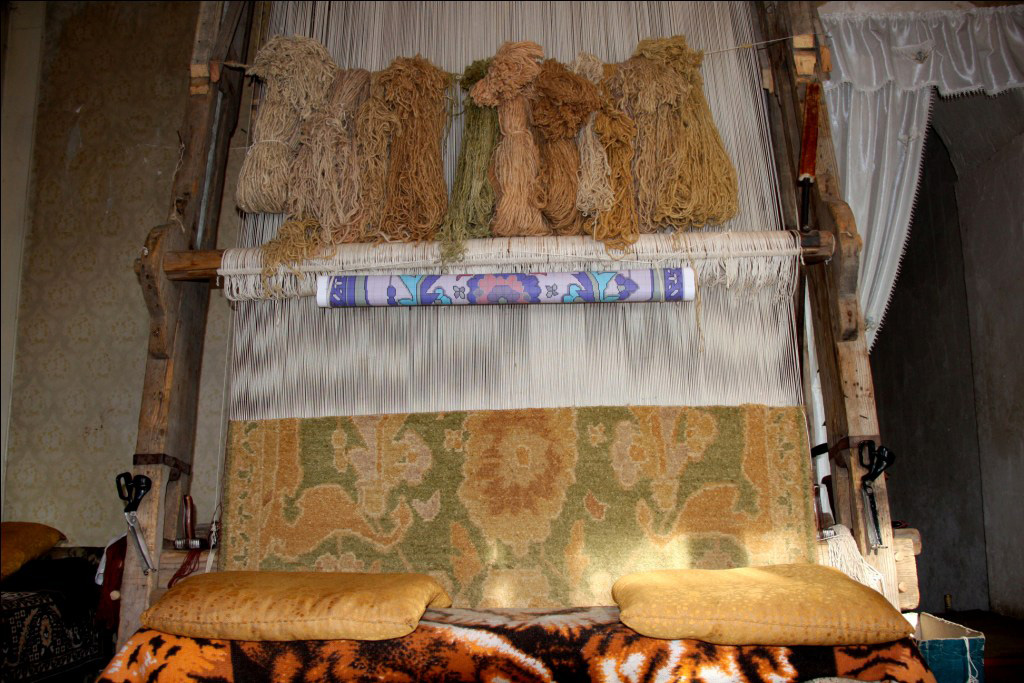
Man on a Mission: Preserving the Art of Armenian Hand-Woven Carpets
Arshak Vardanyan is a man on a mission to save the art of rug making in Armenia.
The 42 year-old native from the Shirak village of Basen says his love of carpets dates back to his childhood, filled with memories of homemade carpets.
“It’s in my blood,” says Arshak. “If the Hay Gorg (Armenian Carpet) factory no longer exists that doesn’t mean that the art of rug weaving should also die.”
Basen was a center of carpet making in the Soviet period and 90% of local residents were employed at the Hay Gorg factory. Many of the workers, including Arshak’s relatives, would also accept private orders and weave carpets at home.

Arshak finally got the chance to get into the business he says he was destined for in 2012 when he was laid off from his accountant’s job at the village municipality. He had heard about Tufenkian TransCauscasus Ltd., which produces hand-woven rugs, and decided to get in touch.
“I visited the company several times and finally got to meet their representative. We talked, came to an understanding, and started the business,” Arshak says.

It was a partnership arrangement. With 500,000 AMD in savings, Arshak purchased the looms and other equipment and Tufenkian would supply the raw material and deal with marketing the carpets.
Arshak confides that young people aren’t attracted to the craft of rug weaving due to the law salaries ranging from 30,000-60,000 AMD.
Greta (below photo),Arshak’s wife, says she was surprised when he first told her about his desire to learn the craft.
 “At first, I couldn’t understand why. Then he told me about his plans to start a business. He asked me if I could learn to weave and I answered ‘Why not?’ Back in the day so many people learnt to weave and I figured so could I,” Greta says.
“At first, I couldn’t understand why. Then he told me about his plans to start a business. He asked me if I could learn to weave and I answered ‘Why not?’ Back in the day so many people learnt to weave and I figured so could I,” Greta says.
Greta grins when recounting the tribulations Arshak experienced when looking for someone one to teach him the craft in the village. Many just shrugged, saying they had either forgotten how or they were too old.
“Luckily, we have Satenik Igityan, a master weaver in the village. She first taught my wife and then me. Satenik now works for us,” says Arshak.
Arshak tells me that in Basen men also learnt how to weave and that the craft isn’t solely a talent given to women.
“Generally, the wives of artisans would help their men. Even the wives of blacksmiths would pick up the hammer. One it comes to rug weaving the picture is reversed. Men in the village might not fess up to it but believe me, in the home they’d be sitting next to their wives, in front of the loom, and working,” Arshak says jokingly.
For the first year, Arshak’s start-up business had only two weavers; his wife and Satenik.
He then participated in an employment training program run by the Ministry of Labor and Social Affairs and taught four people the craft. Three were from Basen. After the three month program ended, Arshak hired two of them.
On average, it takes from one to fourth months to weave a carpet, depending on the size and the knot count. The more knots, the better the quality.
Weavers must strive to make 6,000 knots per day. A worker’s wage is based on 3 Drams per knot, along with quality considerations and the thickness of the thread.

The market price for one square meter of a natural hand-woven carpet is 170,000 AMD (US$415).
Thus, it’s no wonder that only 10% of hand-woven rugs made in Armenia are sold domestically. The rest are exported; mainly to the United States. The high price puts them out of the reach of the average citizen.
“See this carpet here? It will be 10 and one half meters when finished. It’s a special order. All I know is that it’s to be sent to Washington,” says Arshak.
Earlier in our conversation Arshak told me that he has some fifty business ideas floating around in his head. When I ask him what they are, he agrees to tell about one. But he’ll only say it has an environmental bent and that it something he’ll start in his yard.
“It’s not like I’m reinventing the wheel or that I’m the only one with the idea. Before staring anything, the idea has to be analyzed, weighing the pluses and minuses,” Arshak says. “No wonder people in Armenia try something but end up opening a store. They haven’t done their homework.”
 Videos
Videos Photos
Photos




Write a comment